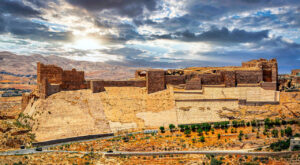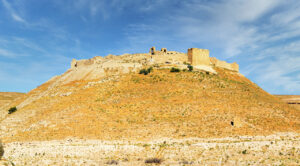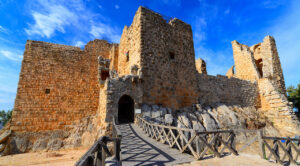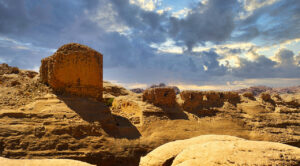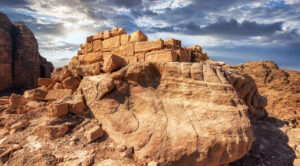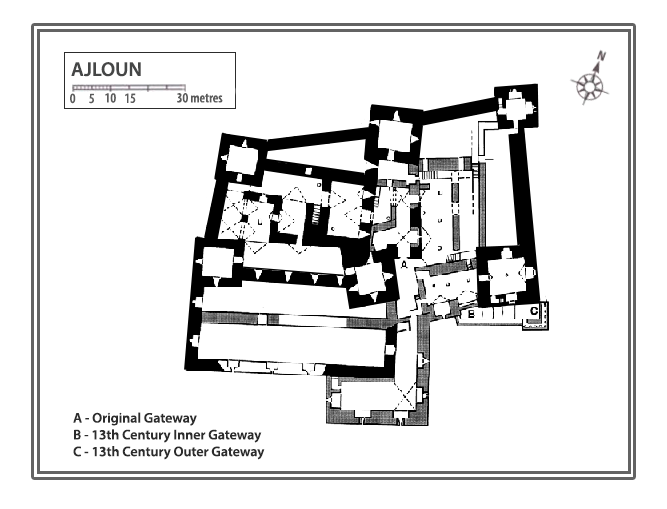If you are visiting Jerash from Amman, you can also visit Ajloun Castle situate a further 25 km North-East. Built on top of the mountain, this castle is a fine example of Islamic military architecture, marking it an important strategic link in the defensive chain against the Crusaders. Initially, it was built by Saladin’s nephew, Izz ad-Din Usama bin Munqidh between 1184 and 1188, and revamped by the Mamluks at the later stage (see full history below).
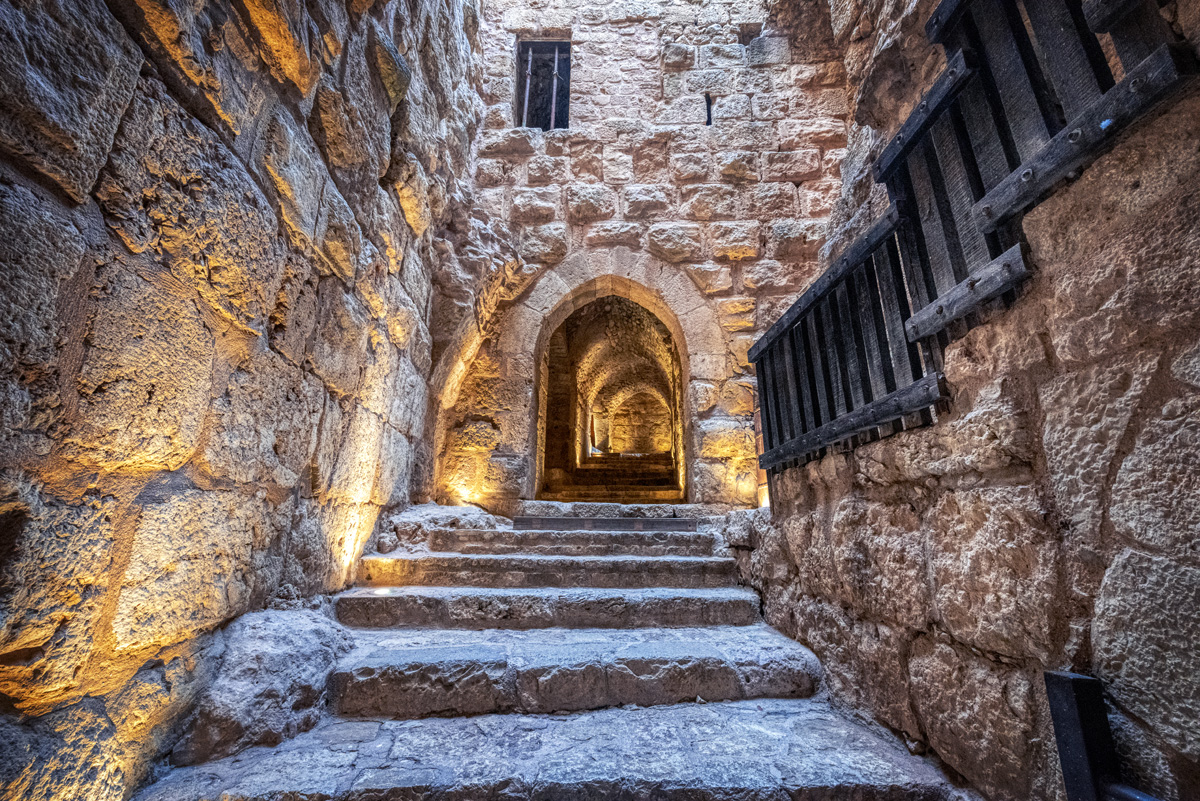
Next to the castle entrance, the visitor centre has a ticket office, parking lot, small souvenir shop, and toilets (probably the cleanest in Jordan). Occasionally there are local guides who offer their services in several languages to explain the history and guide you through different parts of the castle, although information boards in English and Arabic could be found everywhere as well. A small museum containing pots and other artefacts from the various periods of the region is situated inside the castle, near the main gate.
The castle consists of seven towers built of limestone blocks cut from the moat around the castle. Four of the towers were part of the original construction, while the fifth and sixth were built during the castle modifications. The L-shaped Tower of Aybak (seventh tower) was added to the building at its southeast corner for extra fortification later on.
It was named after a governor, as stated in an Arabic inscription on one of the tower blocks. Each of the three levels of the tower had a different function. The lower level was used as resting quarters for soldiers. The second level housed the mosque, with specially carved stone located in one of the windows. The third level of the tower was the palace.
The Mamluks built a masterful roofing system composed of barrel or cross vaults. Some of these vaulting systems were used for very high ceilings, providing a sublime space underneath. Several spaces were also left unroofed to allow natural sunlight to penetrate the different levels of the castle.
There are remains of a small church in the upper and oldest parts of the castle, with traces of the nave, presbytery and slot for a chancel screen, along with part of its mosaic floor. The mosaic floor representing loaves of bread and two fish includes a Greek inscription dedicated to the deacon Aryano. The discovery of this church reinforces historic sources stating that the castle was built on the ruins of a monastery.
The castle has been the nucleus of a settlement that has grown to become the present town of Ajloun. The castle’s developing faubourg led to its second name, Qalʻat ar-Rabad, “the castle with the suburbs”.
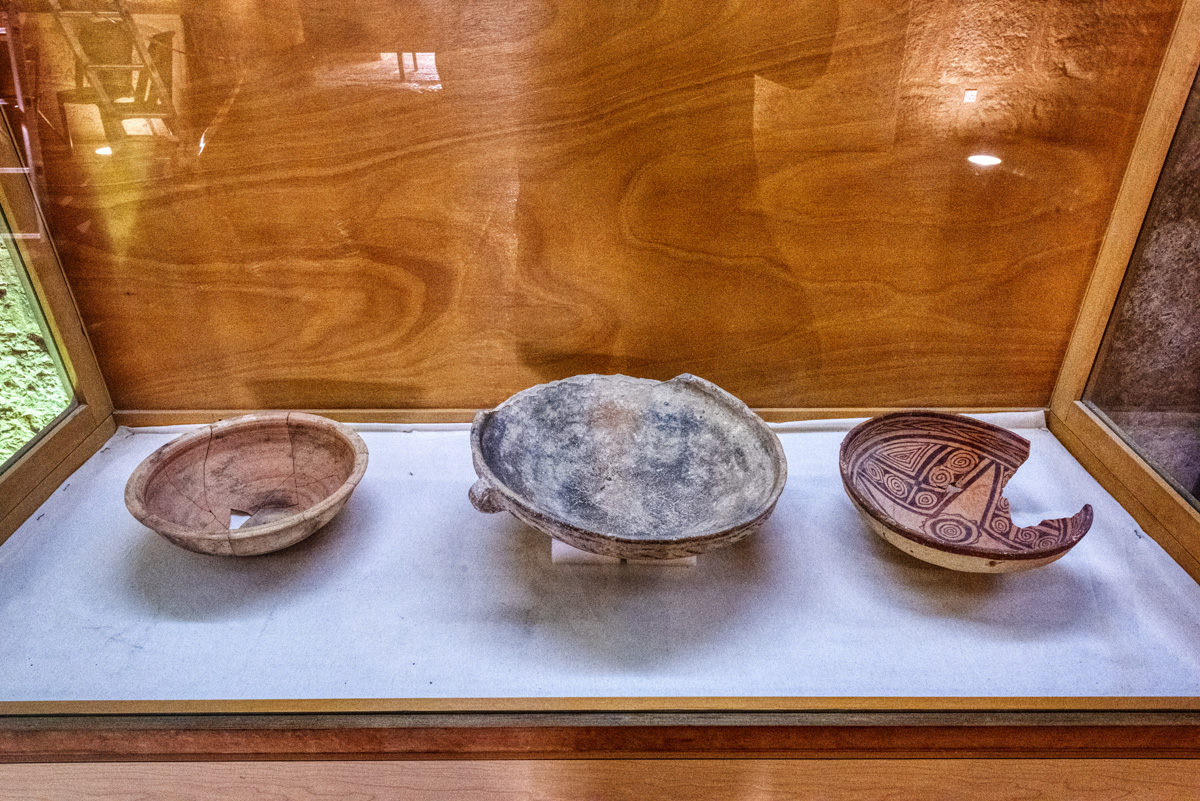
The castle was built on the site of an old monastery by Izz ad-Din Usama bin Munqidh between 1184 and 1188. According to Saladin’s historian Baha ad-Din ibn Shaddad, the fortress was primarily built to help the authorities in Damascus control the Bedouin tribes of the Jabal ‘Auf. These enjoyed enough autonomy to ally themselves with the Crusaders and had at one point set up a 100-tent camp next to the Hospitaller castle of Belvoir on the opposite side of the Jordan Valley. As such, Ajlun Castle is one of the very few Muslim fortresses built by the Ayyubids to protect their realm against Crusader incursions, which could come from Beisan or Belvoir in the west and Karak in the south.
From its location, the fortress dominated a wide stretch of the northern Jordan Valley, controlled the three main passages that led to it (Wadi Kufranjah, Wadi Rajeb and Wadi al-Yabis), and protected the communication routes between south Jordan and Syria. It was built to contain the progress of the Latin Kingdom, which with the Lordship of Oultrejourdain had gained a foothold in Transjordan, and as a retort to the castle of Belvoir a few miles south of the Sea of Galilee. Another major objective of the fortress was to protect the development and control of the iron mines of Ajlun.
After Usama’s death, the castle was enlarged in AD 1214–15 by Aibak ibn Abdullah, the Mamluk governor. He added a new tower in the southeast corner and built the gate.
In 1260 AD, the Mongols destroyed sections of the castle, including its battlements. Soon after the victory of the Mamluks over the Mongols at Ain Jalut, Sultan ad-Dhaher Baibars restored the castle and cleared the fosse. The castle was used as a storehouse for crops and provisions. When Izz ad-Din Aibak was appointed governor, he renovated the castle as indicated by an inscription found in the castle’s south-western tower.
During the Ottoman period, a contingent of fifty soldiers was set inside the castle. During the first quarter of the 17th century, Prince Fakhr ad-Din al-Mani II used it during his fight against Ahmad ibn Torbay. He supplied the castle with a contingent and provided provisions and ammunition. In 1812, the Swiss traveller Johann Ludwig Burckhardt found the castle inhabited by around forty people.
Two major destructive earthquakes struck the castle in 1837 and 1927. Recently, the Department of Antiquities of Jordan has sponsored a program of restoration and consolidation of the walls and has rebuilt the bridge over the fosse.
